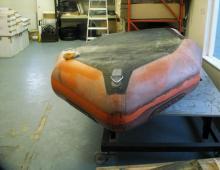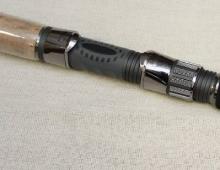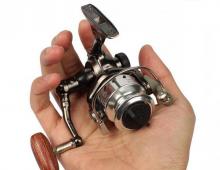How to impregnate a rubber boat for storage? Rubber Boat Repair Tips
The end of the season is coming. mothball the boat. But before that I want to give her not a big repair. Namely, I want to impregnate it with some kind of impregnation in order to repair micro cracks, well, and tint it. Searched through a search engine, nothing sensible. A lot of advice, but in fact, no one checked, everything from someone else's words. Here are some tips.
Rinse thoroughly with cold water and some mild faerie-type cleanser. Then wipe thoroughly, especially all corners, the main thing is to remove all the sand completely, and dry it. Sprinkle with talc and fold. Store at a temperature of 15-20 degrees, well, if this is not the case, then at room temperature, but not higher than 30 and not lower than 10. And be sure to fold it again several times during storage with kinks in other places. Thus, the boat "dive-2", which I had in the second half of the 90s, lasted 8 years, after which it was still sold in good condition. As for all sorts of "what to lubricate" then those who have storage experience advised me not to do it at all - it won't be better, and it's easy to get worse. All this from personal experience.
- All the same, it's better not to bring it up to 30. In this heat, the rubber shrinks. I store it in the basement, we have 15 degrees there both in winter and summer. You can’t stock up potatoes - they bloom, but the warehouse for all sorts of things, for which there is little space at home, turned out to be good.

Wipe the entire surface that you want to update. With a fine sandpaper, for example, sand it, remove the dust with gasoline. Then take the rubber glue that is sold in rem. In kits for rubber boats, dilute with "galosh" gasoline, add aluminum powder, constantly stir to get thin paint. I add powder for 1. the silver color reflects the sun's rays does not age the rubber does not heat the balloon. 2 from a bird's eye view the surface of the water is light due to the reflected sky and the dark boat is clearly visible, unlike the silver one, this is essential for a hunter. Next, we paint the boat in three or four layers with intermediate complete drying. The final procedure is powdering the entire painted surface with talcum powder, I took baby powder in pharmacies. I sprinkled and stroked my palm until there was no sticking, this is a must. You can also pour talcum powder inside the boat, pump up and turn over the boat for better even distribution on the inside. surfaces. You can also use instead of silver (aluminum powder) oil paints to simulate camouflage. The use of other solvents and adhesives is unacceptable to spoil the surface. I also covered an awning on a motor boat, a tarpaulin raincoat, 100% waterproof, but instead of rubber glue I used a sealant in my household white color. Materials coated with sealant become brittle at sub-zero temperatures, this does not happen with a rubber coating , nevertheless, with a minus, it is better not to disturb the product. I installed oarlocks and normal oars in the boat. The boat is used annually, still fishing and hunting. The "paint" is enough for 5-7 years, it has never peeled off, it seems that it becomes thinner, the old coating begins to show through.
If your boat is still leaky, then you can make a simple boat with your own hands. The main thing is to be afloat.
Preventive work on the rejuvenation of rubber in the spring, before use.
I pump up the boat and with the help of an ordinary paint brush I completely coat the cylinders with an adhesive solution. I make the solution from rubber glue No. 88 (one part) and aviation gasoline (two parts). I do not advise you to smoke during this procedure, unless you are a kamikaze, of course.
I mix the liquid thoroughly and apply a thin layer on the rubber surface. This achieves the following positive points: microcracks are closed, through which air quietly escapes; butt joints are strengthened; old rubber absorbs the amount of liquid rubber it needs and becomes elastic. Such prevention is desirable to carry out at least once a year. Then it will be like new for a long time. After each fishing boat must be well dried. It is advisable to do this as soon as you went ashore and washed the boat. If you leave this procedure for later, you can safely forget that your watercraft is lonely and moldy in a case. With frequent repetition of such a thread on the connecting seams, they will rot and the boat will burst at the "most opportune" moment. If the day is sunny, insert one oar into the oarlock and put the boat on the butt. In twenty to thirty minutes it will be dry. For the winter, throwing a "rubber girlfriend" on the balcony is tantamount to betrayal. Large temperature changes and cold adversely affect the properties of rubber.
I know people who, during multi-day rafting, covered the bottom of the boat with a thin layer of grease, explaining that, they say, this achieves an additional sliding moment in especially shallow places, where the boat often scrapes its belly along the bottom and is not immune from cuts. I myself have not used this method, so I have no opinion on this. But it’s worth talking about it, suddenly someone decides that this is a worthwhile innovation.
Ufimka cannot be cured by prevention - a seam rupture or a high-quality patch, it is possible, but in order not to poison at the seams, you need to disassemble everything and assemble it again, while cleaning the seams from the old glue !!!
Unfortunately the build quality...
If the boat slowly descends and descends, and every year faster and faster. Is it coming to an end, or is there something else that can be done? The most suitable thing is to pump up the boat in the sun, degrease it with gasoline, then pour it with nairite glue, and rub it with a spatula. Enough for two or three seasons.
boats have a base of nylon or viscose, cannot be vulcanized - large holes are obtained.
Glue, in most cases, is used 4508. or 4NBuv (less often). Other adhesives based on rubber can be used, but not moment, etc. If the glue has thickened, you can dilute the galosh or nefras B50-170 with gasoline. Immediately before use, add polyisocyanate or desmodur 4% by volume of adhesive, and mix well. If this is not done. then in the sun the adhesive will flow. Almost all rubber adhesives are raw, and the molecular lattice needs to be connected. You can use after mixing for several hours, then throw away the unused.
First, we carefully clean the surfaces to be glued with a sandpaper, a knife edge, degrease with clean gasoline, apply glue THIN! layer 3 times with intermediate drying on both surfaces.
Before gluing, we check the applied glue for "tack", that is, with a light touch, the finger does not stick, and if you press it, it sticks, that's it, you can glue it.
Roll from above with a roller on a FLAT surface (with a bearing or a knife edge from the center to the edges), pump up the boat by 80 percent and leave for three days. If you need to use it right away, then do not rock the boat much, but repeat the operation at home, if the patch is large, then you need to combine the patch with the boat in tension, the boat does not stretch along the side diameter, the fabric has a warp and ducks. Any seamstress knows - it will not match in tension, even if you nail it with nails - it will fall off. An overlap of fabric from a hole larger than 2.5 cm does not make sense.
Polyisocyanate is best stored in a syringe with a needle, it is afraid of atmospheric moisture.
YOU CAN'T GET ANYTHING IF:
- You work in the sun (glue polymerizes before it dries)
- The temperature is below +16 (the glue does not dry at all).
- Gasoline with oil.
- Fat hands.
- Carefully read the instructions.
PVC does not need to be sanded, it is enough to treat the surfaces to be glued with solvents: for PVC it is acetone, and for polyurethane it is MEK (metol-etol-ketone). In general, MEK is suitable for both types of coatings, while acetone can only be used if a suitable solvent cannot be found.
When hot gluing, we heat the patch and the boat at the same time with a hairdryer, and the glue should warm up, and not dry completely, and the fabric should not melt. Apply a patch and roll with a roller until the fabric is warm ON A FLAT SURFACE.
Well, that’s all, basically, it doesn’t hurt to give an exposure of 12 hours.
For household repairs, UR-600 glue, or Uranus, is enough. Also 900i, (in shoe shops)
Add and mix well polyisocyanate -4% by volume or desmodur.
You can do with cold gluing, but I recommend it only for emergency repairs in nature. you need to catch the edge when the glue is not completely dry.
To glue the bottom, you need to tear it off completely, warming it up with a hairdryer, clean it CAREFULLY, not to the base! Glue the sealing tape, then the bottom. Iron - press through with a plate (10 * 10 cm) from the center to the edges, push the tape through the bottom and push through the junction of the tape and the bottom with the corner of the plate or with the back of the scissors. We do everything on a tightly pumped boat! After we lower and roll all the places of gluing with a roller, swing by 90% and leave for 2 days. It is necessary to work at a temperature not lower than +16, not in the sun, apply the glue in a THIN layer 3 times with intermediate drying on both surfaces, before gluing we will check the glue: with a light touch, the finger should not stick, with a strong touch it will stick.
Glue for rubber boats-4508 Add and mix well polyisocyanate -4% by volume or desmodur works for 2-4 hours then we dilute the new one.
Sealing tape. This is a rubberized fabric cut from a roll at an angle of 45
There are also boats from Hypalon (Hipalon). This is synthetic rubber, or rather chlorsulfonated polyethylene from the French company ORKA. Rarely true, but just in case:
Training
Make sure the surface is dry and clean. Designate the area to be repaired with an indelible pencil and by applying a template in the shape of the area to be repaired. Treat the entire area circled with an indelible pencil with fine sandpaper so that the surface of the material becomes slightly fleecy. If possible, clean the treated surface of possible contamination with a carbon-tetrachloride solvent or specially formulated Bostic 501.
Gluing
Only the recommended types of adhesives should be used - Bostic 2402, Bostic 2405, Dunlop 2000, Tiptop 2000 or other Hypalon specific adhesives.
When everything is ready, mix the required amount of hardener with the glue (do not exceed the dosage!) And apply a thin layer on both surfaces to be glued - on the patch and on the repair area (make sure that the glue does not get beyond the borders of the patch, because when it dries it leaves dark brown spots). After 30 minutes, repeat the whole process, applying the thinnest layer of glue on both surfaces and, remember that the glue should not stain your inflatable boat!
After about 10 minutes, or when the second layer of glue is dry to the touch, apply the patch to the designated area, making sure that the inflatable boat cylinder is laid on a flat surface so that the pressure on the patch is distributed evenly.
Using a rounded object, such as the handle of a large screwdriver, iron the patch over the entire area to be bonded, paying particular attention to the edges.
Let the patched boat lie flat for about one hour. Then you can carefully give the sides a rounded shape, but do not pump up to working condition. Do not inflate air cylinders to operating pressure for approximately 24 hours.
If a drop of glue has leaked out of the place of gluing, it should be removed immediately. The longer the adhesive stays on the bead, the more difficult it will be to get rid of. Delamination is more difficult to detect. It is necessary to devote as much time to this as necessary, but be sure to find a place for delamination. The delamination should be thoroughly cleaned, removing all traces of the old adhesive, so that both surfaces are perfectly clean. The preparation procedure for gluing two surfaces was described earlier. Then it is necessary to dilute both glued surfaces and connect them only after applying two layers of glue with intermediate drying and only after the second layer dries to the touch. Both bonding surfaces must lie on a flat base. Smooth out the edges of the glue.
I will be glad if someone helped in rubber boat repair.



